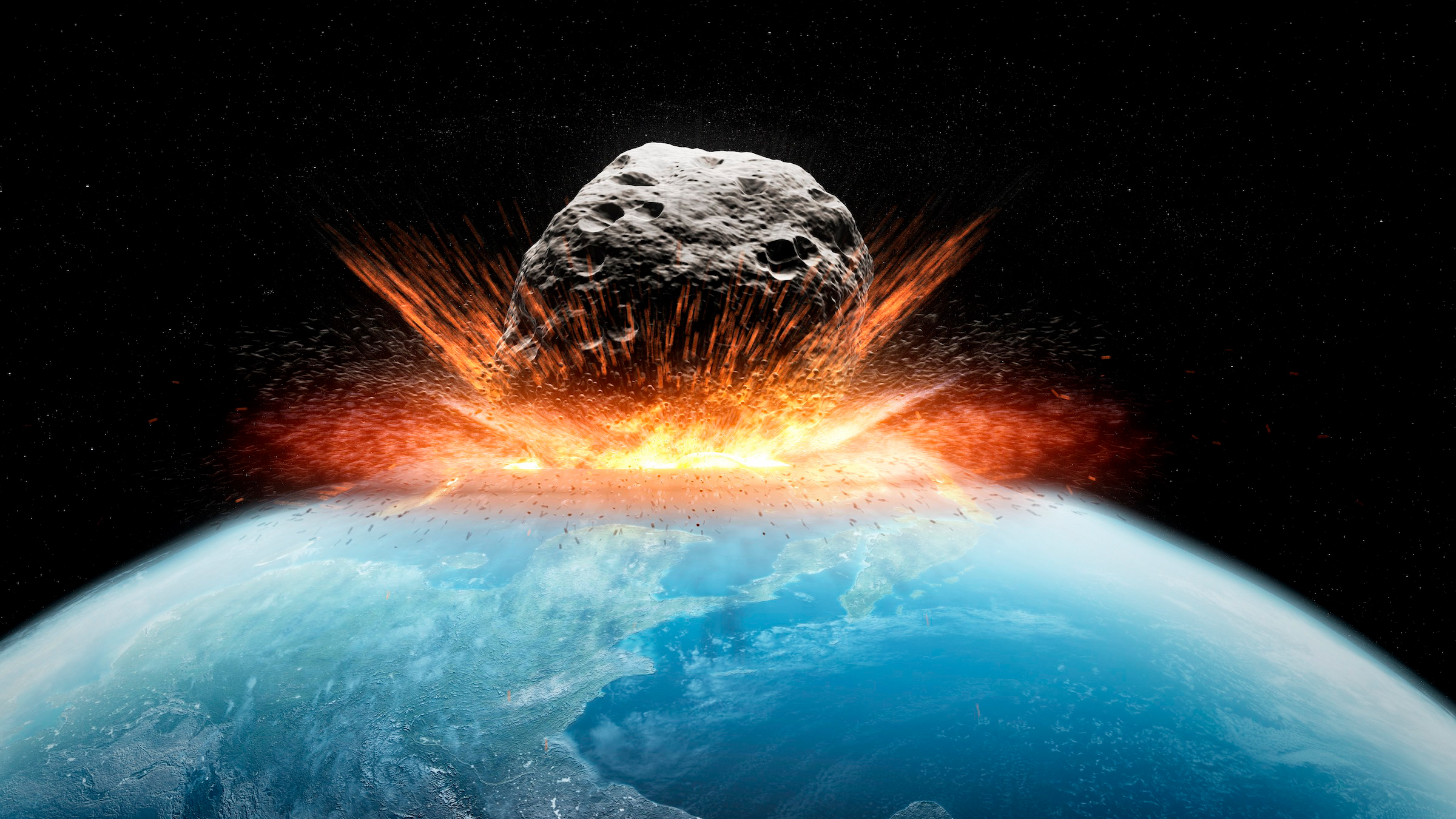What are the largest impact craters on Earth?
What are the largest three?

In its 4.5 billion-year existence, Earth has been punched and gouged by hundreds of large asteroids that have slammed into its surface. At least 190 of these collisions have left colossal scars that are still visible today. But not every space rock that zips into our planet's atmosphere makes it to the ground. So what does it take for an asteroid to make a dent on Earth, and which known impact events have left the biggest craters?
Most space rocks that barrel into Earth's atmosphere aren't giant at all. They're very small — around 3 feet (1 meter) across, according to NASA. That's good for Earthlings, as any space rock less than 82 feet (25 m) in diameter usually won't make it past Earth's atmosphere, NASA reported. The space rock's super high speeds heat up the gases in the atmosphere, which burn away the space rock (which technically becomes a meteor once it meets the atmosphere) as it passes through. In most cases, any space rock remnant that makes it through the atmosphere will cause little or no damage if it reaches the ground.
"The atmosphere protects us from impacts," at least in most cases, Paul Chodas, director of NASA's Center for Near Earth Object Studies at the Jet Propulsion Laboratory (JPL) in Pasadena, California, told Live Science.
Related: What will happen to Earth when the sun dies?
For example, a 56-foot-wide (17 m) meteor exploded over Chelyabinsk, Russia, in 2013, creating a shock wave that broke windows and caused injuries. However, it did not make a crater, because the meteor didn't really touch down, Live Science previously reported. The majority of it dissolved to dust and tiny meteorites on the way, said Gerhard Drolshagen, a physicist who specializes in near-Earth objects at the University of Oldenburg in Germany and the former director of the United Nations' Space Mission Planning Advisory Group. A 5-foot-wide (1.5 m) meteorite at the bottom of a nearby lake, as well as some smaller fragments, was all that remained, according to a report from the 45th Lunar and Planetary Science Conference in 2014.
But the 190 known impact craters on Earth's surface prove that some bigger asteroids have made it through, though they have been far less common. Of those that have made terrestrial landings, most have touched down in North America (32%), followed by Europe (22%) and Russia and Asia (16%), according to the Earth Impact Database.
Of the known impact craters, 44 measure 12 miles (20 kilometers) across or larger. Here's what we know about the largest three to have hit either on land or water:
Get the world’s most fascinating discoveries delivered straight to your inbox.
1. The largest impact crater on Earth, the Vredefort crater in South Africa, is 99 miles (160 km) wide and was likely created about 2 billion years ago, according to NASA's Earth Observatory. The crater has largely eroded, but based on what's left of the rim, scientists have estimated that the asteroid that hit there was 6 to 9 miles (10 to 15 km) in diameter, Chodas said. "That's bigger than the one that killed the dinosaurs, but long before dinosaurs."
For context, "it is expected that if an object is bigger than 1 km [0.6 miles], it could have global effects," Drolshagen told Live Science. So the asteroid that made the Vredefort crater was a catastrophic blow, likely equal to the one that killed the dinosaurs, Chodas said. "The impact would likely have caused fires all around the world, and a tremendous amount of dust would have been thrown up into the atmosphere" changing the climate for months to years, he said.
2. The Chicxulub crater on Mexico's Yucatan Peninsula is similar in size, at 112 miles (180 km) wide, but much younger, NASA's Earth Observatory. It was created by a 7.5-mile-wide (12 km) asteroid that hit Earth 66 million years ago. Though the crater is now partially on land, at the time of impact the Yucatan was under a shallow sea. The collision led to the extinction of 75% of species, including the nonavian dinosaurs. The impact would have sent a "splash" of rock and debris into space. Upon its return to Earth, the flaming debris likely torched much of the planet, Chodas said. The impact also would have created a dust cloud that enveloped Earth for years, blocking sunlight and disrupting the food chain. The nonavian dinosaurs that did survive the initial impact likely starved, Chodas said.
3. The Sudbury Basin in Ontario, Canada, ranks third in size and, like Vredefort, is one of the oldest known impact craters on Earth. A 2014 study in the journal Terra Nova suggested that perhaps it wasn't an asteroid that made the basin but rather a giant comet, or a rocky mix of asteroid bits and ice. Somewhere between 6 and 9 miles in diameter, the space object struck Earth around 1.8 billion years ago.
Now, due to erosion, the crater is almost unrecognizable. But there is a flourishing nickel and iron mining industry there. "What they are really mining is leftover asteroids," Chodas said.
Of the 44 largest craters on Earth that were formed from space rock impacts, 39 of the impacts occurred more than 10 million years ago, according to Earth Impact Database. The loner, Kara-Kul crater in Tajikistan, hit less than 5 million years ago.
"A lot of the big ones are really old, because in the early days of the solar system, there was a lot more debris flying around and impacts were happening much more frequently," Chodas said. "You see the moon covered with craters — the Earth would look the same if it weren't for oceans and erosions." So there were likely many more asteroid impacts, and even larger ones that we don't have records of, he said.
Originally published on Live Science.

Donavyn Coffey is a Kentucky-based health and environment journalist reporting on healthcare, food systems and anything you can CRISPR. Her work has appeared in Scientific American, Wired UK, Popular Science and Youth Today, among others. Donavyn was a Fulbright Fellow to Denmark where she studied molecular nutrition and food policy. She holds a bachelor's degree in biotechnology from the University of Kentucky and master's degrees in food technology from Aarhus University and journalism from New York University.



